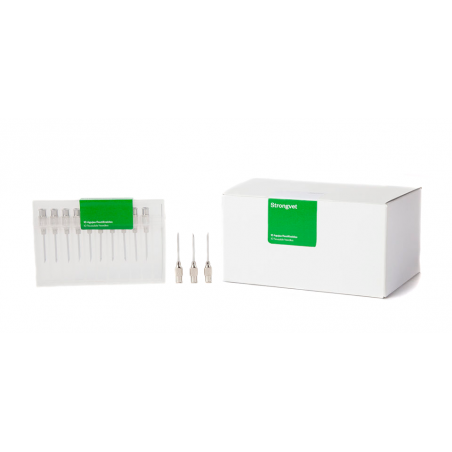Paper
Porcine Reproductive and Respiratory Syndrome (PRRS) with special reference to clinical aspects and diagnosis. A review. G. Nodelijk 2002. Veterinary Quarterly; 24(2): 95-100

Paper brief
What are they studying?
This paper reviews the main clinical aspects and diagnosis of PRRS. The disease has two clear phases: epidemic and endemic phase.
Epidemic phase
In this phase PRRSv characteristically causes major reproductive disorders in sows during 1-3 months. Due to the infection, sows display anorexia, which has been referred to as "rolling inappetence" in some cases. Also, they can show respiratory signs, fever or even die.
The typical reproductive problems reported are: abortion, premature farrowing, higher number of stillborn piglets, foetal death with or without mummification, and neonatal mortality. Also, some authors have reported cyanosis of ears, abdomen and vulva.
In weaned piglets and fattening pigs, the clinical picture basically consists of: respiratory disease, increased mortality and slow growth. Furthermore, PRRSv is frequently aggravated by secondary infections. PRRSv infections are normally age-dependent, so the severity of the disease is higher in nursery than in fattening pigs, which can suffer from subclinical forms of the disease.
Endemic phase
PRRSv can persist in affected farms for years, and most of the pig producing countries are currently in an endemic phase of the disease. Since PRRSv became endemic, reports of reproductive losses, increase of respiratory problems and poor performance of finishing pigs are very common.
There are few field studies on the endemic course of the disease, but it is accepted that PRRSv is present in most cases in a subclinical form, without great influence on production parameters. Periodic reproductive failure has been reported in naïve sows.
In infected herds, respiratory disease problems (referred to as PRDC) have been reported, particularly in nursery and grower pigs. In these cases, there is a higher than usual incidence of secondary infections resulting in growth rate reduction and increased mortality.
What implications does this paper have?
During the epidemic phase of the disease, important reproductive disorders can be found in sows for a period of 1-3 months and, even though PRRS can even be subclinical when it becomes endemic on sow herds, naïve sows still show periodic reproductive failure.
Piglets and finishing pigs infected with PRRSv show respiratory disease, increased mortality and slow growth. Also, PRRSv is frequently aggravated by secondary infections referred to as PRDC. Even in endemic situations, there is a higher than usual incidence of secondary infections resulting in growth rate reduction and increased mortality.
|
Although the paper may already be considered old (over 10 years), its description of the symptoms caused by PRRSV during an epidemic infection remains current. Even the duration of the clinical picture, whatever its severity, remains the same: 1-3 months. Given that a large proportion of farms in areas of high pig density are endemically infected, epidemic scenarios are perhaps less frequent these days. In these cases we should worry about the presence of negative subpopulations that may become infected, causing clinical disease to reappear. When this happens, problems are recurring, thus increasing their economic impact and giving producers and technicians a real headache. The highest risk group is always the gilt group, either because they are externally sourced and negative on arrival in order to ensure that new strains of PRRSV are not introduced or, if they are internally sourced, because they may lose protection during the growth phases, ending up with the same problem. This is the reason why immunization of these groups before introducing them into the farm production dynamics is essential. To do this, we use different methodologies (contact with viraemic animals, use of live vaccines or even sero infections), and the goal we seek to achieve is always the same: to have gilts that have come in contact with the virus and, therefore, have developed immunity recently, but are not excreting viruses any more; this health status will allow their introduction into the herd without the risk of new recirculation of the virus. Gilt adaptation is a crucial element to prevent recirculation of PRRSV in positive farms and, consequently, avoid the production of viraemic piglets, responsible for the occurrence of respiratory problems in later phases. Obviously, when it comes to controlling the movement of viruses within an infected farm, we musn't forget to keep a strict batch management. Thus, when we begin to produce batches free of shedding pigs, these batches will become negative, so avoiding infection and the damages consequently associated. This batch management should not only involve physical separation, but also avoidance of transmission between them, for example through the use of contaminated needles. |










